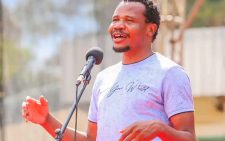Youth protest energy can be turned into policy power

This week, Kenya’s streets were filled with the energy of youth. From Nairobi to Mombasa, young people protested with clarity, coordination, and conviction. Yet when the smoke cleared, the question lingered: how can this energy be turned into lasting influence?
Kenya is a young country. Over 70 percent of the population is under 35. But in Parliament, youth make up less than five percent of elected leaders. In county assemblies, the numbers are even lower. While young Kenyans trend hashtags, write petitions, and march in thousands, very few shape policy at the table where decisions are made. This disconnect is structural, not accidental. Politics is expensive. The average cost of running for an MCA seat is estimated at Sh2 million; for MP, closer to Sh18 million. Youth, already excluded from jobs, credit, and land ownership, face an uphill climb. And when they protest, they are branded “activists” or “thugs”, rarely policy thinkers.
But the truth is, today’s protests are tomorrow’s blueprints. Behind every trending hashtag is a real demand, on tax, justice, accountability, or fairness. These are policy conversations in disguise. The tragedy is that Kenya has no clear system to capture and convert this civic energy into structured legislation. Yet, a solution is within reach.
What if Kenya created a national digital policy sandbox, a virtual space where youth can build, test, and simulate the real-world impact of their ideas? Think of it as a civic lab: a place where young Kenyans propose new tax models, design local ordinances, or draft policies and see how those proposals would work in real life.
This is not fantasy. Countries like Taiwan have piloted such tools. Their government uses platforms like vTaiwan and join to crowdsource citizen solutions and run digital consultations on national issues. Even in Kenya, platforms like Mzalendo and Policy KE show that tech can support citizen engagement.
A policy sandbox would work like this: a young group in Kisii uploads a digital proposal on county bursary reform. The system runs simulations, showing cost, legal gaps, and affected demographics. County officials and civil society can then review, give feedback, and decide whether to refine or adopt it. If it gains traction, it feeds into the public participation system as a structured, viable input, not a noisy demand.
This would solve two problems. First, it bridges the trust gap between the government and youth. Second, it strengthens policymaking. Kenya desperately needs fresh thinking on tax, unemployment, climate, and governance. Who better to shape the future than those who must live in it?
We also need to revise how public participation is conducted. It cannot just be ward barazas and last-minute PDFs. Counties should be required to digitise public consultations and allow youth groups, student bodies, and digital communities to submit proposals. If we want fewer protests and more solutions, we must create tools that let young people build, not just break.
The writer is an Innovations Evangelist and a PhD Candidate – machariamuhoho@gmail.com














